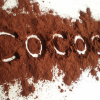Expanding on two (1, 2) previous posts on the general antiviral actions on Emodin, it also seems to be very effective for Herpes Simplex 1. What I find interesting though, is that it's capable of actually reducing the viral load in the brain and other organs. Given the recent association of neurodegenerative diseases and Herpes infections, I think this could have some important applications. Most substances that kill the herpes virus are virucidal only against the free virus. That is, they don't affect the total viral burden inside the cell. Only the extracellular virions are affected and this makes them great topical agents. If you want to eradicate the virus completely (*cough, cure ?) you need to reduce the viral load inside the cells. I thought this was impossible but I found a few substances that can do this. Emodin is one.
There are 6 hits on Pubmed for "herpes" and "emodin". One is an in vivo study.
http://www.ncbi.nlm....emodin%20herpes
My question to all the Resveratrol gurus on this forum is how to go around the laxative effect of emodin. Is any emodin absorbed at all ? Also, has anyone tusing anything less than 99% Resveratrol noticed a reduction in Herpes outbreaks ?
The effect of emodin, an anthraquinone derivative extracted from the roots of Rheum tanguticum, against herpes simplex virus in vitro and in vivo.
AIM OF THE STUDY:
Herpes simplex viruses (HSV-1 and -2) are important pathogens for humans and the discovery of novel anti-HSV drugs with low toxicity deserves great efforts. Rhubarb is one of the oldest and best-known traditional Chinese medicines. We initiated this study to test if emodin is the active ingredients from Rheum tanguticum (R. tanguticum, one of the Chinese Rhubarb) against HSV infection and to investigate its antiviral activity on HSV infection in tissue culture cells and in a mouse model.
MATERIALS AND METHODS:
Emodin (3-methyl-1,6,8-trihydroxyanthraquinone) was extracted and purified from R. tanguticum (cultivated at high mountainous area in Qinghai) and the purity was determined by high performance liquid chromatography. The antiviral experiments of emodin against HSV infection were performed in vitro and in vivo. In vivo, the HSV-infected mice were orally administered with emodin beginning at 24 h post-HSV exposures with dosages of 3.3 g/kg/day, 6.7 g/kg/day, and 11.3 g/kg/day, respectively, for 7 days.
RESULTS:
Emodin was found to inhibit the replication of HSV-1 and HSV-2 in cell culture at the concentration of 50 μg/ml with antiviral index of 2.07 and 3.53, respectively. The emodin treatment increased the survival rate of HSV-infected mice, prolonged survival time and showed higher efficacy of HSV elimination from brain, heart, liver and ganglion, compared to the viral controls. In addition, the antiviral activity of emodin was found to be equivalent to that of acyclovir in vivo.
CONCLUSIONS:
Our results indicate that emodin has the anti-HSV activity in vitro and in vivo and is thus a promising agent in the clinical therapy of HSV infection.Copyright © 2010 Elsevier Ireland Ltd. All rights reserved.
Emodin has three mechanisms of action including the direct inhibition of UL12 alkaline nuclease activity, casein kinase 2 (CK2) inhibition and directly disrupting the phospholipid bilayer. It's interesting that UL12, is conserved in all species of Herpesviridae. This could also be effective for treating HSV-2, CMV, epstein barr, etc.
The doses used in the study above seemed kind of high. This sounds a little more hopeful.
Serum profiles after oral administration of emodin at a dosage of 2
g
kg−1 in mice showed that the peak serum concentration of emodin is 700
μM (Mengs et al., 1997). We revealed that emodin at a concentration of 21.5
μM was sufficient to reduce 50% virus yields without cytotoxic effect. Moreover, there is no evidence or equivocal evidence of carcinogenic activity of emodin in rats or mice.
Edited by Lufega, 30 December 2011 - 08:39 AM.




















































